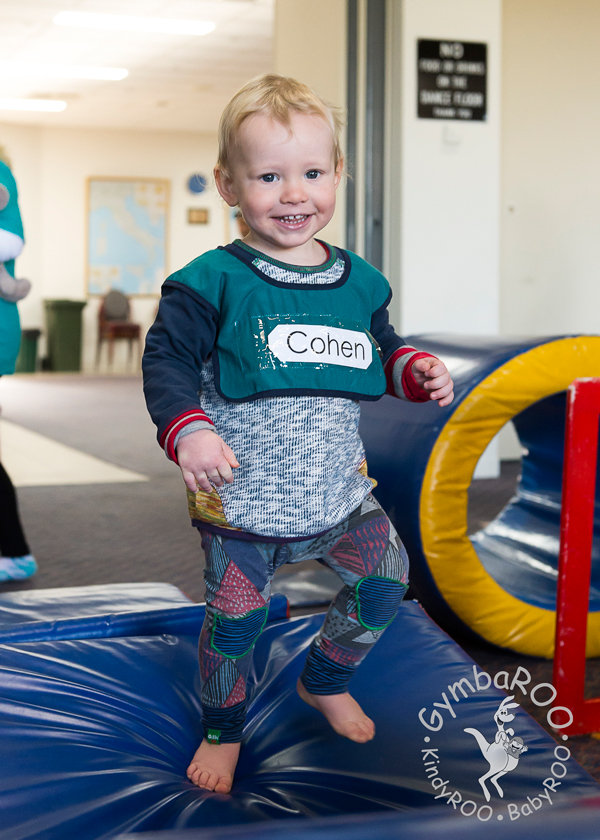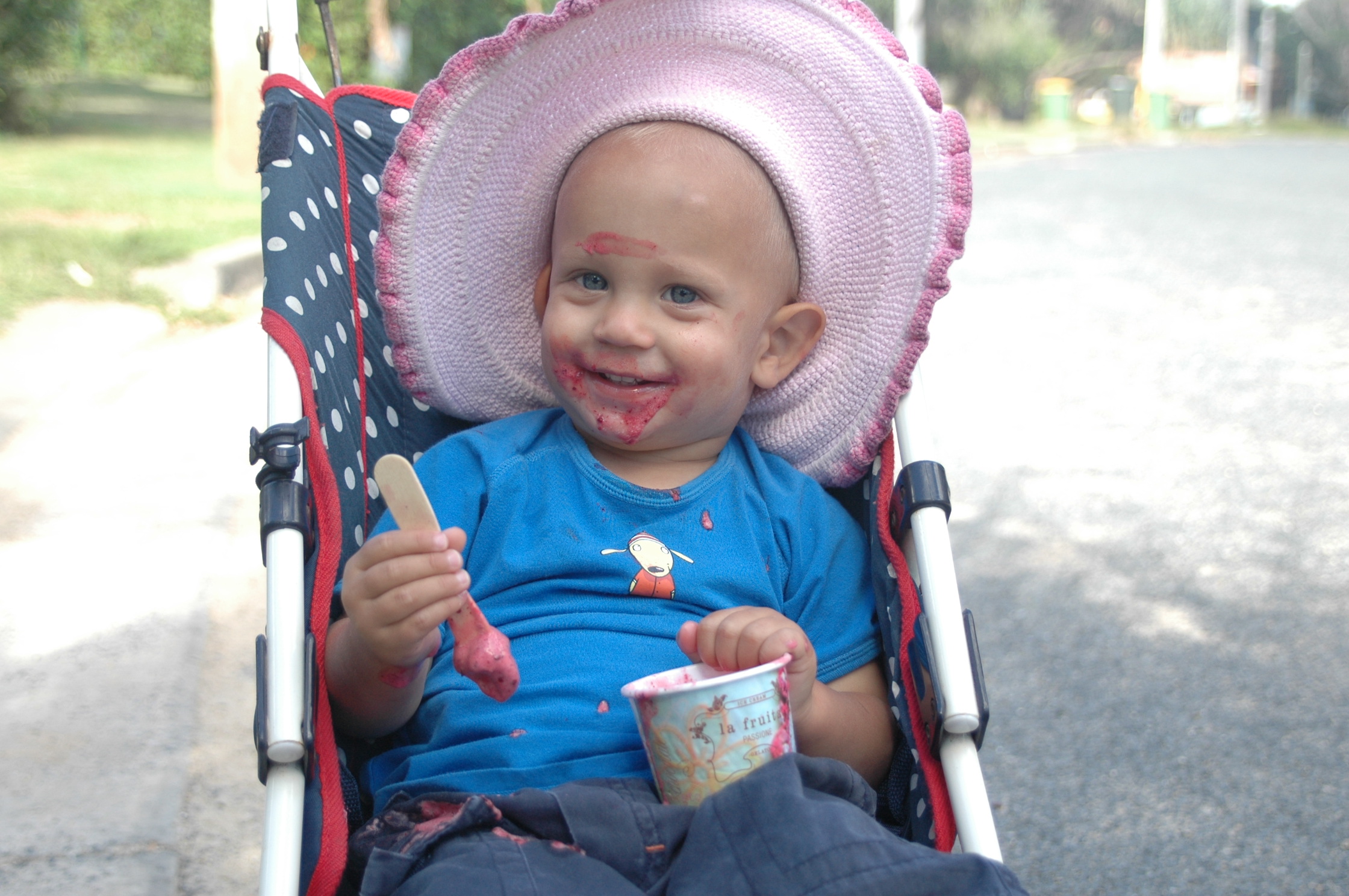Join the thousands of parents already raising smarter, happier babies with our online baby classes: The Active Babies Smart Kids series. Click here.
GymbaROO-KindyROO kids are excelling academically, emotionally, in leadership roles and on the sporting field. Find us at: GymbaROO-KindyROO
Dr Jane Williams and Bindy Cummings
Two-year-old Jack is upset. In fact, he has thrown himself on the ground and is screaming blue murder! He isn’t finished running up and down the grassy slope in the park, even though he has done it a 100 times and it is getting dark!
Jack’s not being deliberately difficult, he’s just being two. There’s no doubt that two-year-olds can be challenging at times, and it sure can wear parents out, but Jack’s brain is working harder than ever this year. Not only is he fine tuning his motor, balance, visual and communication skills, he is trying to work out who he is, and how other people fit into his (rather self-centred) world.
At two years of age, we start to look at our young children as more than infants and our expectations increase accordingly. We start to (unconsciously) expect them to understand and conform to social rules that guide our everyday life. Doing as one is asked is just one of those rules. But two-year-olds, while much more physically active than infants, are still some way off controlling their emotional and behavioural responses. The brain is doing its best to get the connections right, and to do this we need to make sure that the experiences two-year-olds have help them to sail as smoothly as possible through the (sometimes) rough waters of the third year.
So what’s happening to our children’s bodies and brains in this third year of life?
Our two-year-olds are certainly looking more grown up, although heads are still big in proportion to bodies and, until closer to three years of age, they still have a ‘pot’ bellies as the tummy muscles are not yet well developed. Their balance skills are improving and most two-year-olds rarely stop running. They love to practice and practice newly found skills, such as balancing along logs, walking up and down the stairs, rolling down grassy slopes and climbing any available ladders, no matter how dangerous!

In the first half of this year, both sides of the body are still working together with each other. What one side wants to do, so does the other. They still hold both hands out for a biscuit! This is because the two halves of the brain are not yet ready to play separate roles. By late in the third year, the brain matures enough that a child can use one side of the body differently to the other. This means that when a child turns two, he will ride a push-along trike – both legs push together, but by his third birthday he can usually pedal a tricycle – both legs doing different tasks at the same time.
To understand what is happening in his brain, it is helpful to think of the brain and body as two separate halves with a dividing wall between them. Each half has its own general in charge of its own army of muscles – the left hemisphere of the brain controlling the right side of the body, and the right hemisphere controlling the left. By two years, each army has learnt to work quite well by itself on its own side of the wall. However, the ability to work together in the first two years has been confined to practicing inborn patterns of movement like crawling, creeping, climbing and walking, or doing the same thing together – two arms or two legs together (like propelling along a push-along toy). The two generals cannot yet successfully plan a joint venture where their armies do different things. Moving the arms in opposite directions at just two is just impossible without help.
During this year however, the cooperation between the two generals improves. They integrate their orders and new movements are possible where the armies not only work together but each can do something different. Now one hand can do something different from the other, as is required for cutting out, pasting or doing puzzles. Just think how many activities require one hand to do one thing while the other does something else; pouring liquid, eating, screwing off lids and even dressing oneself.
Not only do two-year-olds learn to use both sides in cooperation to do different things, but this year they also learn to cross one arm over into the other’s field of action. Remember the wall between the two fields? – well, this year the armies learn to knock it down! This ability to cross the midline with ease occurs at approximately 2 ½ to 3 years. This is called lateralisation.
By two years of age most children have sufficient body awareness to be able to move their limbs on command, for example, they can raise both arms when asked. At first, they will raise both their arms at the same time, but by their mid twos they should be able to do this alternately – one arm up and the other down. A child cannot stand on one foot until this stage is reached, and so it is impossible to walk up stairs without holding on. Walking downstairs is even more difficult and most twos need to hang onto the rail even if they have lateralised (use two sides independently).
Hand development also takes a leap forward this year, from the immature full hand grip of the younger child, the fingers now begin to play a part in holding crayon or pencil enabling an improvement in control. Our two-year-old is most likely to draw in lines, dots, splodges and circles, but towards the end of this year, they are attempting representational drawing – we may not be able to recognise the things they draw, but they do!

Along with improved hand control and the ability to feel the differences in the two sides of the body, comes the development of the preferred hand. Until this stage a child usually uses the right hand for tasks on the right side of the body and the left hand on the left side. It is important for parents to make sure both hands are used for some activities; finger painting, swinging by the hands from bars etc. The hands are extensions of the body, back, shoulders and arms. If these are not developed, gaining finger control will be very difficult.
Balls are now popular as the child can now use both hands and feet independently; the eyes can track together with better speed and accuracy and the child has developed a sense of space and direction. Catching, however is still difficult due to the speed of the ball. Slow moving objects like balloons and bubbles are easier. Even though visual tracking has improved, focussing, fixing and hand-eye coordination is still challenging and the young two has difficulty matching shapes to do a puzzle. By the end of this year they are enjoying simple puzzles.
At just two, speech is still difficult to understand, but by three many parents complain that their children never stop talking or asking questions! Stuttering for a brief period is not uncommon as one of the main speech centres in the brain is being developed. Following two instructions is now easy. If you ask them to “pick up that book and bring it to me please”, they will understand what you have asked, they just may not chose to do it!
Even with all these brain changes two-year-olds remain very self-centred and not all that keen on cooperating and sharing. It will be another year before Jack’s brain matures emotionally and allows him to always respond to your requests appropriately. In the meantime, the struggle between independence and dependence means our two-year-olds are likely to have some ‘ups’ and ‘downs’ in their daily lives. Patient parenting, the comfort of loving arms and lots of opportunities to practice new found skills will help them ride out the storms that sail them helter-skelter toward their third birthday.
Dr Jane Williams (PhD, BMgt, RN(Paeds)) is the Research and Education General Manager for GymbaROO and KindyROO. Dr Williams is one of Australia’s leading experts on baby and child development. More on Dr Williams here.
Bindy Cummings (B.Ed(Human Movement) Hons) has worked as a teacher, child development consultant, early childhood development lecturer, teacher trainer and INPP & iLS consultant. She is the co-creator of GymbaROO’s Active Babies Smart Kids online series, has authored many published articles on child development. She is working on the content and development GymbaROO’s portal and online training programs, and the creation of new online programs for parents and children. More on Bindy Cummings here.
GymbaROO-KindyROO
Thousands of parents, babies and children are presently involved in our programs and creating rising stars. GymbaROO-KindyROO kids are excelling academically, emotionally, in leadership roles and on the sporting field. Come join all the fun and learning! “GymbaROO – The best decision I ever made for my child.” Classes from 6 weeks old – 7 years GymbaROO KindyROO
Active Babies Smart Kids – Online Baby Classes
GymbaROO-KindyROO’s online series of baby classes is taking the parenting world by storm! It is highly recommended by doctors, paediatricians, early childhood experts and the Maternal Child and Family Health Nurses Association. This series is being called: “The essential guide for parents”. Join the thousands of parents already playing with their babies from birth, in the best way for brain and body development and laying crucial foundations for future learning. What happens in the first year, not only matters, it matters a lot!
Active Babies Smart Kids BabyROO series – Click here.
Try the first class FREE! Click here to watch our Active Babies Smart Kids Episode 1 – Tummy Time
Enjoy the following GymbaROO-KindyROO articles
GymbaROO-KindyROO: Who, what, where, why and how
Become a GymbaROO-KindyROO franchisee
Happy for life: How GymbaROO helps emotional development.
W-sitting and what to do about it.
Toilet training. When, why and how.
When will my baby / toddler become right or left handed?
Reading to babies and children gives them an early cognitive advantage.
Laughter assists the growing of intelligence
Understanding tantrums – it’s all about the brain.
Why GymbaROO kids excel academically.
Why GymbaROO kids excel at the three R’s – wRiting, Reading, aRithmetic (maths).
Why GymbaROO kids excel at sport.
Why GymbaROO kids excel socially and in leadership roles.
Click here for more GymbaROO-KindyROO article choices



